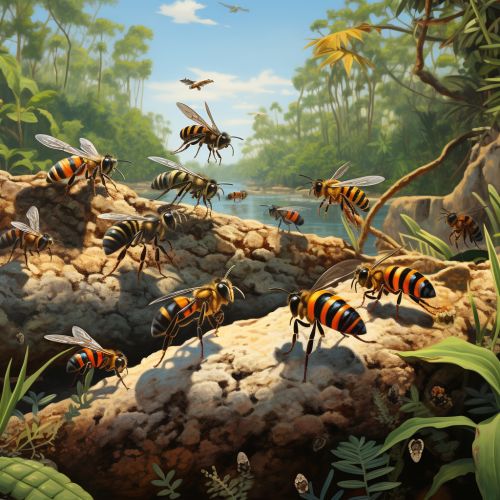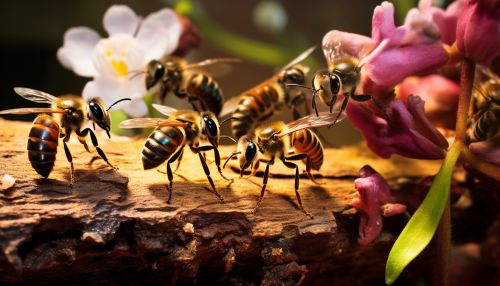The Evolution of Social Insects and Their Complex Societies
Introduction
Social insects are members of the insect order Hymenoptera, Isoptera, and some Coleoptera and Diptera, that live in complex, well-organized societies known as colonies. The evolution of these societies is a fascinating subject, involving the development of intricate behaviors and structures that allow for cooperation and division of labor among colony members.


Evolution of Social Insects
The evolution of social insects is a complex process that involves the interplay of various factors including genetic, environmental, and ecological influences. The first social insects evolved from solitary ancestors, with the transition to sociality likely driven by the benefits of cooperative behavior and group living.
Genetic Influences
Genetic influences play a crucial role in the evolution of social insects. The kin selection theory, proposed by W.D. Hamilton, suggests that social behavior can evolve if the benefits of helping relatives outweigh the costs to the individual. This is often expressed in terms of inclusive fitness, which takes into account both direct and indirect fitness benefits.
Environmental Influences
Environmental factors also play a significant role in the evolution of social insects. For instance, the harsh and unpredictable environments in which many social insects live may have favored the evolution of cooperative behaviors and complex societies. Additionally, the availability and distribution of resources can influence the size and structure of insect colonies.
Ecological Influences
Ecological factors, such as predation and competition, can also influence the evolution of social insects. For example, the presence of predators may have driven the evolution of defensive behaviors and structures in social insects. Similarly, competition for resources can influence the size and structure of colonies, as well as the division of labor within colonies.
Complex Societies of Social Insects
Social insects live in complex societies characterized by division of labor, cooperative care of offspring, and overlapping generations. These societies are often organized into castes, with different individuals performing different roles within the colony.
Division of Labor
One of the key characteristics of social insect societies is the division of labor. This involves different individuals within the colony performing different tasks, such as foraging for food, caring for offspring, or defending the colony. The division of labor in social insects is often based on age, size, or genetic differences between individuals.
Cooperative Care of Offspring
Another key characteristic of social insect societies is the cooperative care of offspring. This involves multiple individuals contributing to the care and upbringing of the colony's young. This can include tasks such as feeding, grooming, and protecting the young.
Overlapping Generations
Social insect societies also typically have overlapping generations, with multiple generations of adults living together in the same colony. This allows for the transfer of knowledge and skills from older to younger generations, and also provides a form of 'insurance' against the loss of individuals.
Conclusion
The evolution of social insects and their complex societies is a fascinating subject that continues to be a focus of research. Understanding the factors that have driven this evolution can provide insights into the nature of sociality and cooperation, and can also have practical applications in areas such as pest management and conservation.
